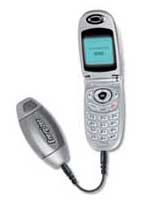
Not the best charger
Energizer, the battery company is launching portable chargers for cell phones, iPods, and handheld gaming devices, but they are designed to be opimized using its e2 lithiumAA batteries.
The chargers can also use any alkaline batteries, but won’t charge as quickly or as effectively with those, Kelvin Belle, senior product manager for Energizer, told Red Herring Magazine.
Of course the chargers will cause a mild stir amongst the off-grid community, but they are no match for solar trickle-chargers for example. I don’t see it taking over, said Sara Bradford, analyst at the Frost & Sullivan consultancy.
Using Energizers marketing clout, The Energi To Go line of chargers will be in retail stores across the United States in the fall. The devices will cost $19.99 for the cell-phone charger, which holds two batteries, and $29.99 for the iPod and gaming chargers, which use four batteries.
The two-battery pack will charge a phone one-and-a-third times, and additional batteries cost $9.99 for four.
Each of the products will come with different smart tips to plug into various devices, and the packaging will expose the tips so users can make sure they fit their device, said Mr. Belle.
I think we have the right product to fill the market needs right now, he said. The need for power is growing, and the power to talk and charge anywhere, anytime you don’t have to be near a plug is very important to customers.
The launch underlines the need for more power as consumer electronics devices gain more features, says Red Herring. Last year, about 170 million cell phones were in service in the U.S. alone. Studies show heavy users (read: chatterboxes) drain their cell phone batteries several times a week, said Mr. Belle.
Of course, it’s not the first battery-based charger. Others are already available, such as Valence Technology’s N-Charge Power System for laptops and ESI Enterprises subsidiary Compact Power Systems Cellboost power packs for cell phones, camcorders, MP3 players, and game players.
Those are different because they are larger than Energizer’s product, and they use rechargeable not disposable batteries, said Sara Bradford, research manager of the power systems group at Frost & Sullivan.
Fuel-cell companies are also tackling future solutions to the power gap problem. Medis Technologies, for example, expects its power packs to hit retail stores at the end of this year.
Mr. Belle said Energizer To Go chargers didn’t come out earlier because Energizer needed time to develop its smart tip technology, which optimizes the power transfer from the battery to the charger.
The smart tip monitors the power levels of both the AA batteries and the cell phone battery, customizing the rate of transfer to the appropriate level for the specific device.
Energizer worked with partner Mobility Electronics iGo Technology to develop tips for the audio and gaming products, and worked with another partner one that it would not disclose for the cell-phone charger tips, said Mr. Belle.
Still, even if it’s late to the game, Energizer has the advantage of national distribution, and that means users can go on trips knowing they can buy the products on their way and refill the batteries anywhere, according to Mr. Belle.
Most of the alternatives don’t have national distribution, he said. You have to get them from catalog sales.
Ms. Bradford agrees that the ease of finding Energizer batteries in places like Wal-Mart, instead of just in airports, makes the technology more convenient. She said the company clearly has a good chance in the power pack category.
A lot of people are trying to position themselves as the bridge between today’s batteries and tomorrow’s fuel cells, she said. We’re not there yet, and these [chargers] are definitely an option. Energizer has a firm grip on the alkaline market and also their lithium cylindrical cells. Obviously, it’s a good place for them to expand or diversify.
Energizer hopes the product will expand the market beyond a small niche, opening new doors for the company.
You can put this in your briefcase in place of your charger, and you can buy different tops to charge the same device, this could replace the electric charger on short trips, said Mr. Belle.
Also, users can take comfort knowing there is mass distribution, so they can just buy one instead of carrying an extra device, and can take extra lithium batteries with them or just run in and buy alkalines, he added.
But Ms. Bradford said the chargers make the most sense for travelers and people who are already buying the reusable, quick-boost products, and will remain a niche market.
I don’t see it taking over, she said. Its more focused on those heavy users, not the average user, who hardly ever uses these electronics off the grid.